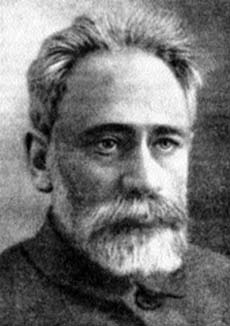


 تاريخ الرياضيات
تاريخ الرياضيات
 الرياضيات في الحضارات المختلفة
الرياضيات في الحضارات المختلفة 
 الرياضيات المتقطعة
الرياضيات المتقطعة
 الجبر
الجبر
 الهندسة
الهندسة 
 المعادلات التفاضلية و التكاملية
المعادلات التفاضلية و التكاملية 
 التحليل
التحليل
 علماء الرياضيات
علماء الرياضيات |
Read More
Date: 6-4-2017
Date: 4-4-2017
Date: 4-4-2017
|
Died: 8 May 1953 in Moscow, USSR

Benjamin Fedorovich Kagan's father Fedor Kagan was a clerk. Kagan entered Novorossysky University in Odessa in 1887. He was expelled in 1889 for participating in the Democratic Students Movement. He was sent to Ekaterinoslav in south-central Ukraine. The Soviets renamed Ekaterinoslav in 1926 calling it Dnepropetrovsk.
In 1892 Kagan received a degree from Kiev University, then in 1895 he was awarded a Master's Degree by St Petersburg University.
He taught at Novorossysky from 1897 until 1922, becoming a professor there in 1917. However this was not his only post during this period for he taught higher education classes for women and also taught at the local Jewish school. As if this was not enough, Kagan also edited the Journal of Experimental Physics and Elementary Mathematics from 1902 until 1917 and he was the director of a large publisher of scientific materials Mathesis.
In 1922 he went to Moscow when the Department of Differential Geometry was founded at Moscow State University. Kagan was the first Head of Department and he founded an important School of Differential Geometry. He retained his interest in publishing, however, and he was the director of the science department of a state publisher for ten years. He also directed the department of mathematics and natural sciences of the Great Soviet Encyclopaedia.
In 1927, Kagan organised a seminar on vector and tensor analysis. He founded a publication associated with this seminar Transactions of the seminar on Vector and Tensor Analysis with its applications to Geometry, Mechanics and Physics in 1933. In 1934 Kagan and other members of his School organised an International conference on differential geometry which took place at Moscow University.
Kagan worked on the foundations of geometry and his first work was on Lobachevsky's geometry. In 1902 he proposed axioms and definitions very different from Hilbert. Kagan studied tensor differential geometry after going to Moscow because of an interest in relativity.
Kagan wrote a history of non-euclidean geometry and also a detailed biography of Lobachevsky. He edited Lobachevsky's complete works which appeared in five volumes between 1946 and 1951.
Books:



|
|
|
|
علامات بسيطة في جسدك قد تنذر بمرض "قاتل"
|
|
|
|
|
|
|
أول صور ثلاثية الأبعاد للغدة الزعترية البشرية
|
|
|
|
|
|
|
مكتبة أمّ البنين النسويّة تصدر العدد 212 من مجلّة رياض الزهراء (عليها السلام)
|
|
|